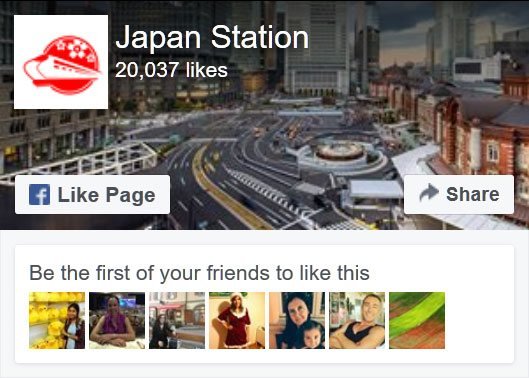Sapporo Municipal Subway is a rapid transit railway network in Sapporo that is mostly located underground. It has three lines: the Namboku Line which runs north-to-south through the city and is color-coded green, the Tozai Line which runs east-to-west through the city and is color-coded orange, and the Toho Line which follows a more irregular north-south route on the city’s east side and is color-coded blue. The Namboku and Toho Lines connect at Sapporo Station, while all three lines meet at Odori Station in the city center.
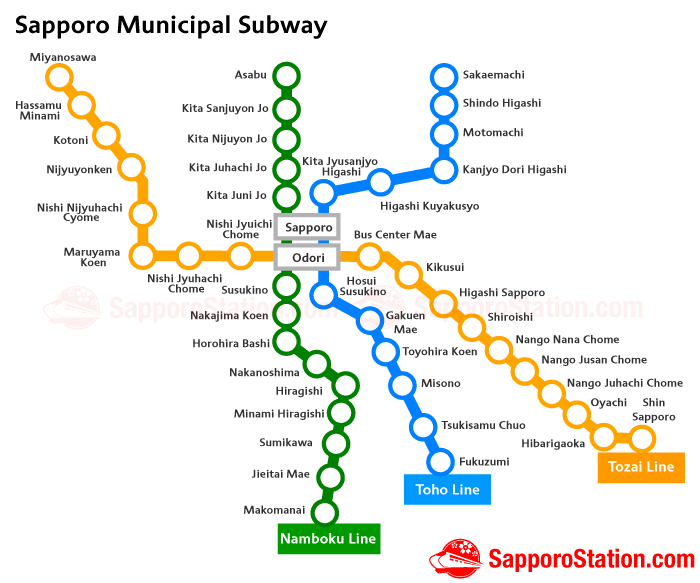
Sapporo Municipal Subway is fast, taking roughly 2 or 3 minutes to travel between stations, and it is open between 6:00 and 24:00. In this way it provides a swift and convenient means for traveling between the city center and some of its outlying attractions. It also connects with Sapporo’s bus and streetcar networks at various points and so helps provide easy access to all parts of the city.
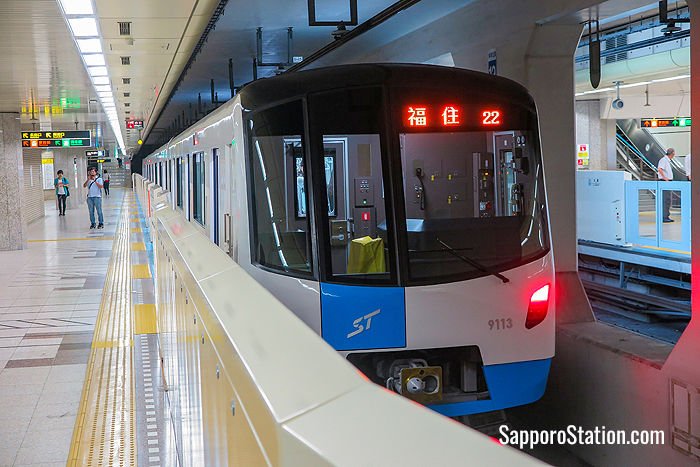
A train on the Toho Subway Line
The Namboku Subway Line
The Namboku Line runs between Asabu Station in the north of Sapporo and Makomanai Station in the south. This line links Sapporo Station with important locations in central Sapporo such as Odori Park and the Susukino entertainment district. North of Sapporo Station, Kita-Juni-Jo Station is a convenient exit point for Hokkaido University’s Sapporo Campus and for Hokkaido University Museum. On the southern part of the Namboku Line’s route Nakajima-Koen Station provides access to Nakajima Park and a historic wooden guesthouse called the Hoheikan. At the southern end of the line Makomanai Station provides access to Makomanai Park, and also to the Chuo Bus service for Sapporo Art Park.
For full details of this route and its key destinations see our Namboku Subway Line article.
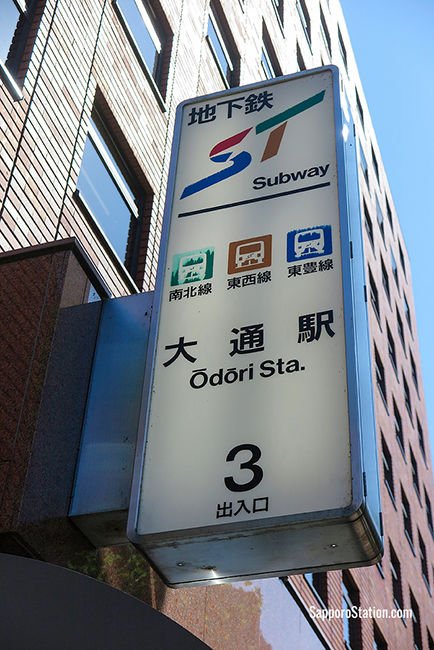
A sign at Entrance 3 of Odori Station
The Tozai Subway Line
The Tozai Line runs between Miyanosawa Station on the west side of Sapporo and Shin-Sapporo Station in the east. This line can be used to travel from Odori Station in the center of the city to attractions on the city’s outskirts such as Shiroi Koibito Park which is close to Miyanosawa Station or the Historical Village of Hokkaido which can be accessed by bus from Shin-Sapporo Station. Other useful stops are Maruyama-Koen Station for Maruyama Zoo and Hokkaido Jingu Shrine, Nishi-Juhatchome Station for Hokkaido Museum of Modern Art, and Bus Center-Mae Station for Chitosetsuru Sake Museum.
For full details of this route and its key destinations see our Tozai Subway Line article.
The Toho Subway Line
The Toho Line runs between Sakaemachi Station in the north of the city and Fukuzumi Station in the south. Like the Namboku Line, this line can be used to travel between Sapporo Station and the Odori Park and Susukino areas. However, this is also the only line that links all three festival sites of the annual Sapporo Snow Festival, as it has stations in Odori and Susukino as well as its northern terminus at Sakaemachi Station which serves the Tsudome (Sapporo Community Dome) festival site. Other useful stops are Higashi-Kuyasho-Mae Station for the Sapporo Beer Museum and Fukuzumi Station for Sapporo Dome.
For full details of this route and its key destinations see our Toho Subway Line article.
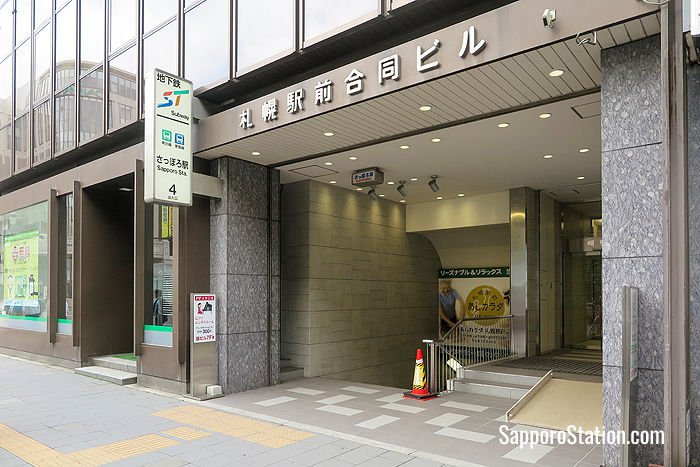
Entrance 4 for Sapporo Subway Station
Transfers
Sapporo Municipal Subway connects with JR rail services as well as the city’s streetcar and bus networks at several locations.

A transfer sign at Odori Station
Subway Transfers
Passengers can transfer between the Namboku and Toho lines at Sapporo Station, and between all three lines at Odori Station. Susukino Station on the Namboku Line is also just a 5 minute walk from Hosui-Susukino on the Toho Line.
JR Transfers
Sapporo Subway Station is directly connected to JR Sapporo Station by an underground passage. This provides access to the Hakodate Main Line, Gakuentoshi Line, and Chitose Line. Passengers can also transfer to the Chitose Line at Shin-Sapporo Station on the Tozai Subway Line.
Streetcar Transfers
Streetcar stops are located near several subway stations allowing for easy transfers between the two networks. Streetcar stops can be accessed from Susukino, Nakajima-Koen, and Horohira-Bashi stations on the Namboku Line. On the Tozai Line they can be accessed from Nishi-Juhatchome and Nishi-Juitchome stations. On the Toho Line the streetcar can be accessed from Hosui-Susukino Station. There is also a streetcar stop near Odori Station which is served by all three subway lines.
Bus Transfers
Sapporo’s main bus terminal for both city bus and highway bus services is located at Sapporo Station. Odori Bus Center also has some city and highway bus services and is located close to Bus Center-Mae Station on the Tozai Line.
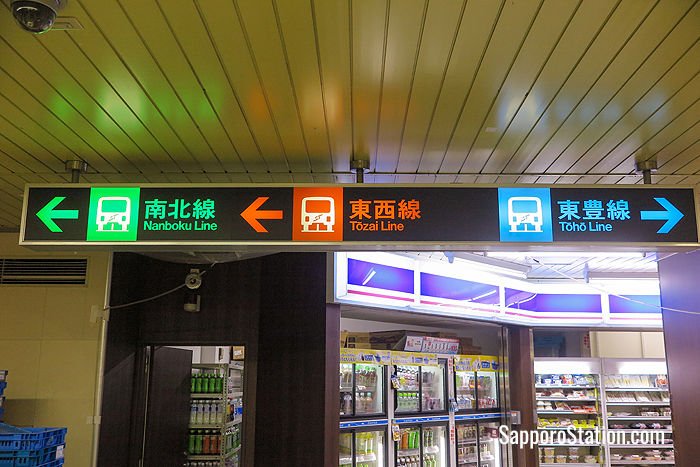
Subway line signs at Odori Station
Buying Tickets
Tickets are available from automatic ticket machines which are located beside the ticket gates at each subway station.
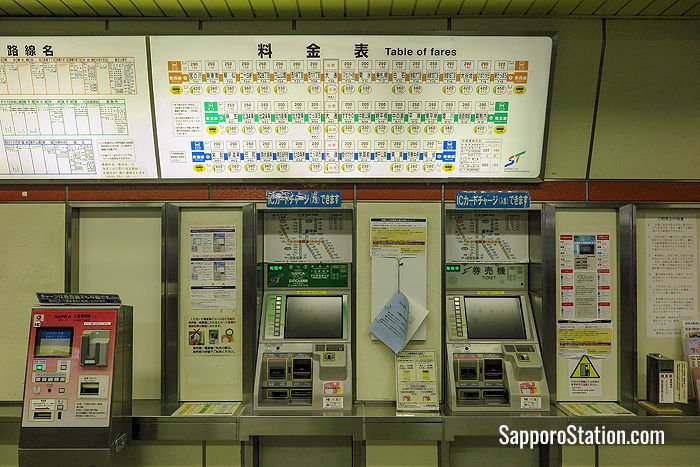
Sapporo Municipal Subway ticket machines
The ticket machines are operated by touch screens and have an English language option so they are quite easy to use.
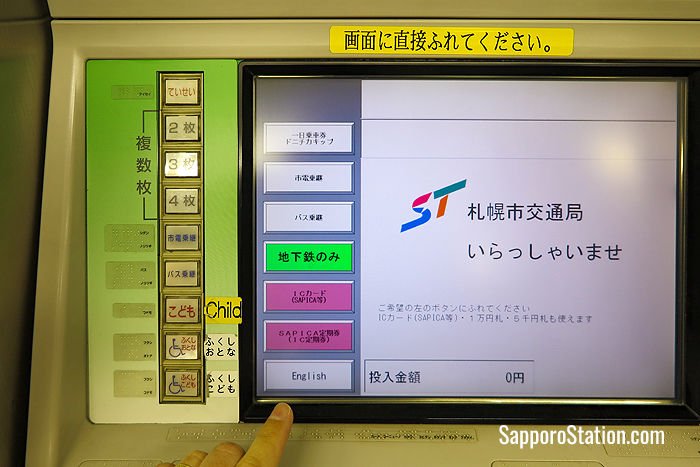
The English language button is located at the bottom of the screen

Choose the Subway Only button…
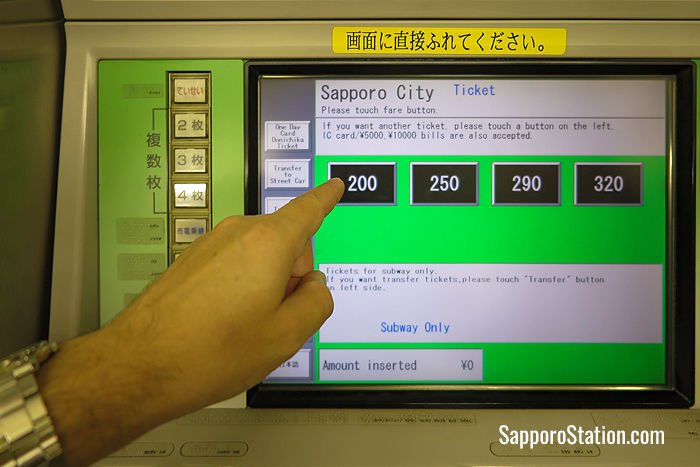
…then choose your ticket
There are also fare charts above the ticket machines which have destinations written in both Japanese and English.
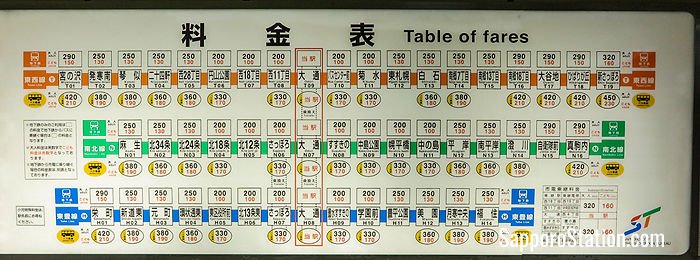
A fare chart above the ticket machines showing all subway destinations
Tickets on Sapporo Municipal Subway are currently priced between 210 and 380 yen for adults and between 110 and 190 yen for children.
Discount Tickets
If you plan to use the subway system several times in one day, it is a good idea to buy a One Day Ticket. This allows one day of unlimited rides on the subway and costs only 830 yen for adults and 420 yen for children. There is also a cheaper one day pass called the Donchika Ticket which is available for use on weekends and national holidays. This costs 520 yen for adults and 260 yen for children. These discount tickets can be bought from the automatic ticket machines at each subway station.
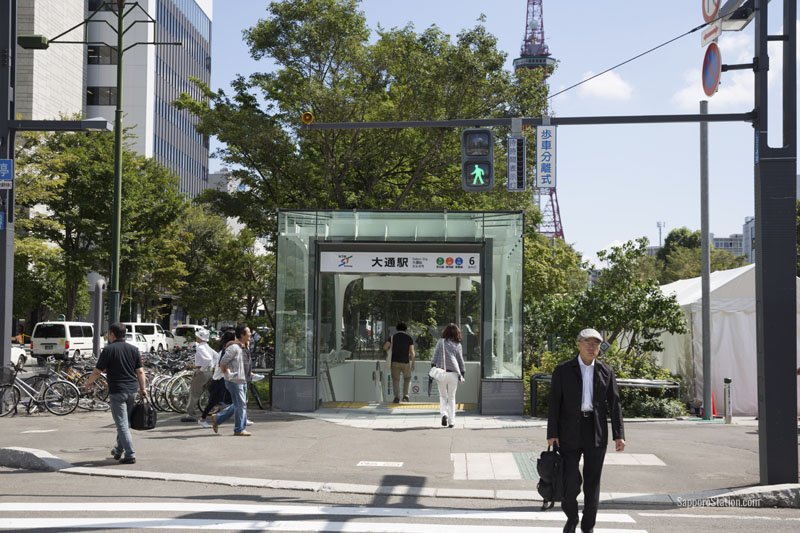
Odori Station entrance. This station is an interchange Namboku Line, Tozai Line, and Toho Line.
IC Cards
Prepaid IC cards can be used on Sapporo Municipal Subway. The local IC card is called SAPICA and this can be used on bus routes in Sapporo and the Sapporo Streetcar as well as on the subway. Each time you use the SAPICA card you automatically earn points and when you have collected enough of these points you can use them to pay for your fares. This card can also be used as electronic money at some shops in Sapporo and at vending machines that have the SAPICA logo.
The SAPICA card can be purchased and recharged at automatic ticket machines in Sapporo’s subway stations. However, the SAPICA card can only be used in Sapporo, so its use is quite limited. Other IC cards that can be used both on Sapporo Municipal Subway and in other regions throughout Japan are Kitaca (JR Hokkaido), Suica (JR East), PASMO, manaca, TOICA, PiTaPa, ICOCA, Hayakaken, nimoca, and SUGOCA.
Useful Links
Detailed information on fares, tickets and using the subway, together with route maps for the subway and streetcar networks can be found on the English language Sapporo City Transportation webpage.
Visit the official SAPICA website for details of how to use this IC card in Sapporo.
Article and original photos by Michael Lambe. All rights reserved.
